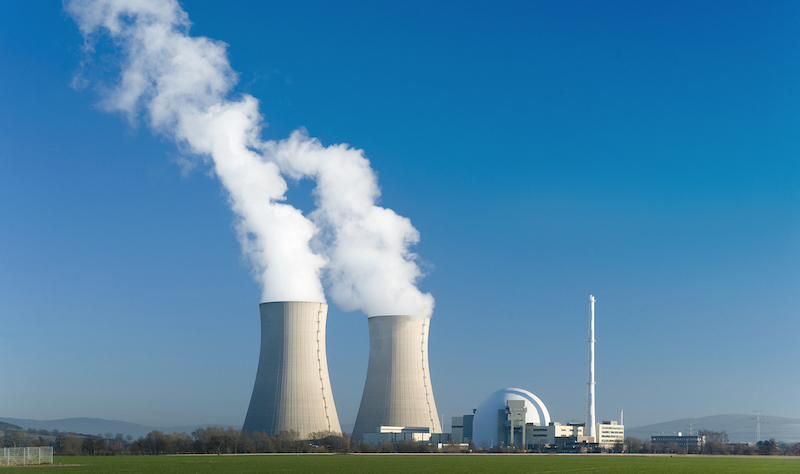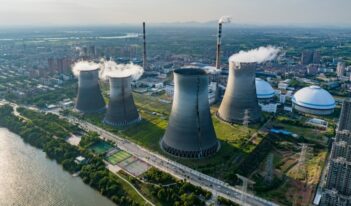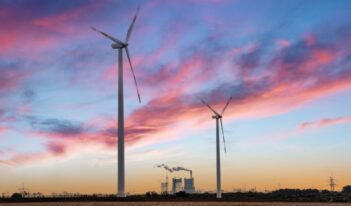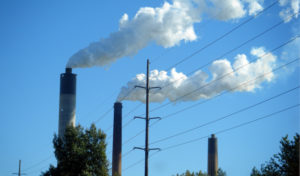
Biden Administration looks to U.S. fleet of nuclear reactors as a vital source to achieve energy goals.
Citing a profound climate crisis, President Joseph R. Biden has committed to achieving a carbon-free electricity sector by 2035 and net-zero emissions economy-wide by 2050. But some experts argue that, although President Biden’s actions promise to accelerate the timeline for achieving a net-zero world, he will struggle to meet his energy goals.
In response, the Biden Administration is going nuclear. U.S. Department of Energy (DOE) Secretary Jennifer M. Granholm has stated that “U.S. nuclear power plants are essential to achieving President Biden’s climate goals.”
According to DOE statistics, nuclear energy provided 52 percent of the United States’ carbon-free electricity in 2020. In that same year, nuclear power plants operated at full capacity 92 percent of the time. As a result, nuclear energy currently provides the largest domestic source of clean energy and serves as the most reliable source of energy in the United States.
Despite the benefits offered by nuclear energy, however, 12 nuclear reactors have closed since 2013 due to shifting energy markets and other economic factors. Furthermore, the DOE anticipates that additional economically at-risk facilities could retire in the years to come.
Rather than risk losing these major sources of carbon-free energy, legislators have acted to save economically vulnerable nuclear reactors in the recent Infrastructure Investment and Jobs Act. Under the bipartisan infrastructure bill, legislators allocated $6 billion to create a civil nuclear credit program—federal funding to owners and operators of certified U.S. nuclear reactors in the process of retiring due to economic factors.
But many U.S. citizens remain wary of the continued use of nuclear power. According to a Gallup poll conducted in 2019, U.S. citizens are not only evenly split on the question of increasing reliance on nuclear energy, they are also evenly split on nuclear energy’s safety.
Proponents in favor of nuclear power, such as Earth.Org, argue that nuclear energy is among the safest energy sources available. Earth.Org cites a study commissioned over a decade ago by the National Aeronautics and Space Administration which claims that nuclear energy saved nearly 2 million lives between 1971 and 2009 by preventing the need for additional fossil fuels.
The Health Physics Society—a scientific organization of professionals who specialize in radiation safety—maintains that nuclear energy is one of the most heavily regulated commercial enterprises in the United States. As a result, the Health Physics Society claims that the principal regulator of nuclear energy in the U.S.—the Nuclear Regulatory Commission (NRC)—adequately monitors all radioactive material associated with nuclear power generation.
The environmental group Natural Resources Defense Council (NRDC), however, disagrees. The NRDC contends that, despite the regulatory efforts of the NRC, the potential for a nuclear disaster will always exist given the inevitability of future natural disasters, human error, mechanical failure, and design flaws.
Amid rising debate, the U.S. Government Accountability Office (GAO) has concluded that the DOE and NRC could better oversee and address key safety issues related to nuclear energy. In a series of recent reports, for example, the GAO determined that the DOE and NRC should work to secure stable funding for advanced nuclear energy technologies, address challenges related to cyberattacks, and build a facility for the permanent storage of nuclear waste
Despite generating more than 85,000 metric tons of nuclear waste, which is highly radioactive and bears a half-life of 24,000 years, the United States currently offers no permanent storage site. As a result, owners and operators of nuclear power plants often store nuclear waste on site.
Although the U.S. Congress directed the DOE under the Waste Policy Act to design and construct a permanent underground repository at Yucca Mountain in Nevada, the DOE canceled the project after President Barack Obama terminated funding
Since its proposal, the state of Nevada has maintained that Yucca Mountain is “an exceptionally bad site,” fraught with “insurmountable technical, safety, environmental, and institutional problems.
Without a safe, permanent storage site somewhere, however, some worry that scattered nuclear waste will disproportionately impact minority and socioeconomically disadvantaged communities. More than 240 organizations recently wrote to congressional leaders, protesting against the civil nuclear credit program. These organizations claim that owners and operators of nuclear reactors have dumped thousands of pounds of long-lasting nuclear waste in Indigenous communities.
Even the NRC is conducting a systemic review of how the agency’s programs, policies, and activities address environmental justice
But no matter what the NRC concludes, nuclear energy may be around a lot longer if the Biden Administration is to achieve its energy goals. It has identified the United States’ 93 operational nuclear reactors as a vital source to realize a carbon emissions net-zero world.



